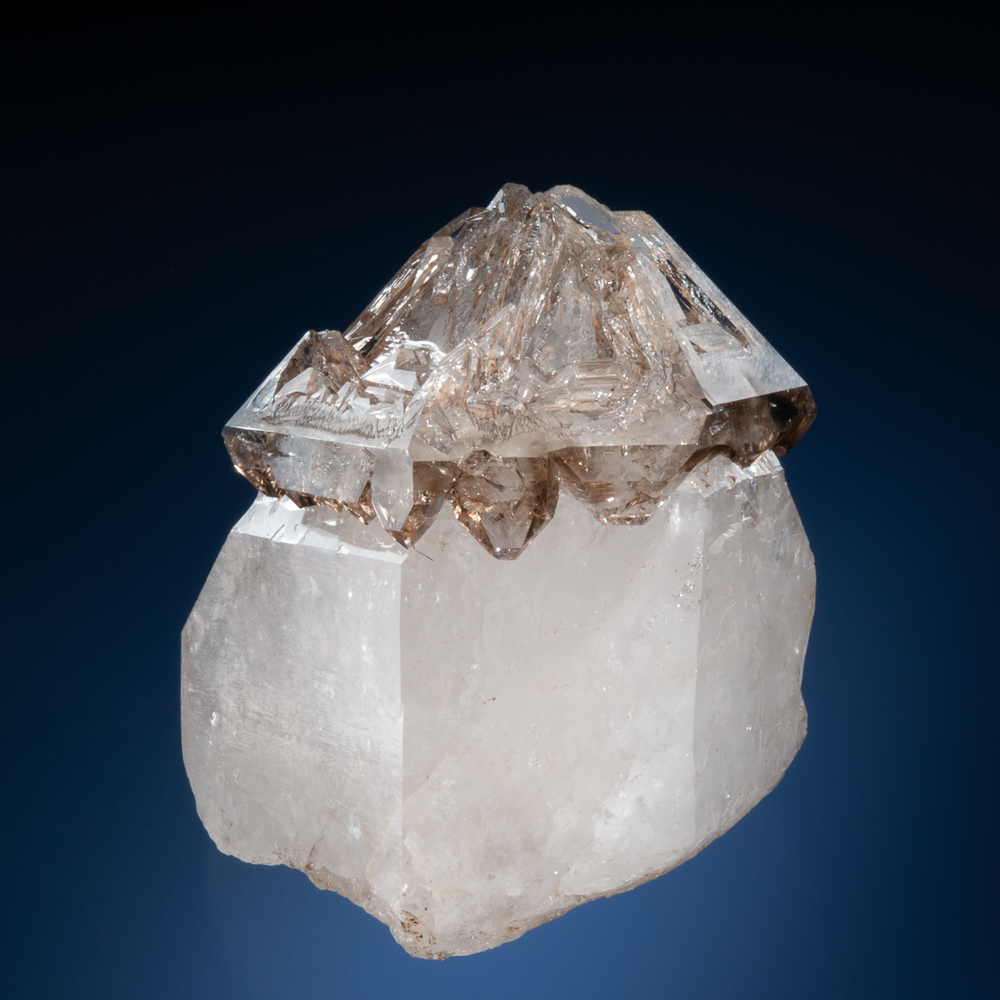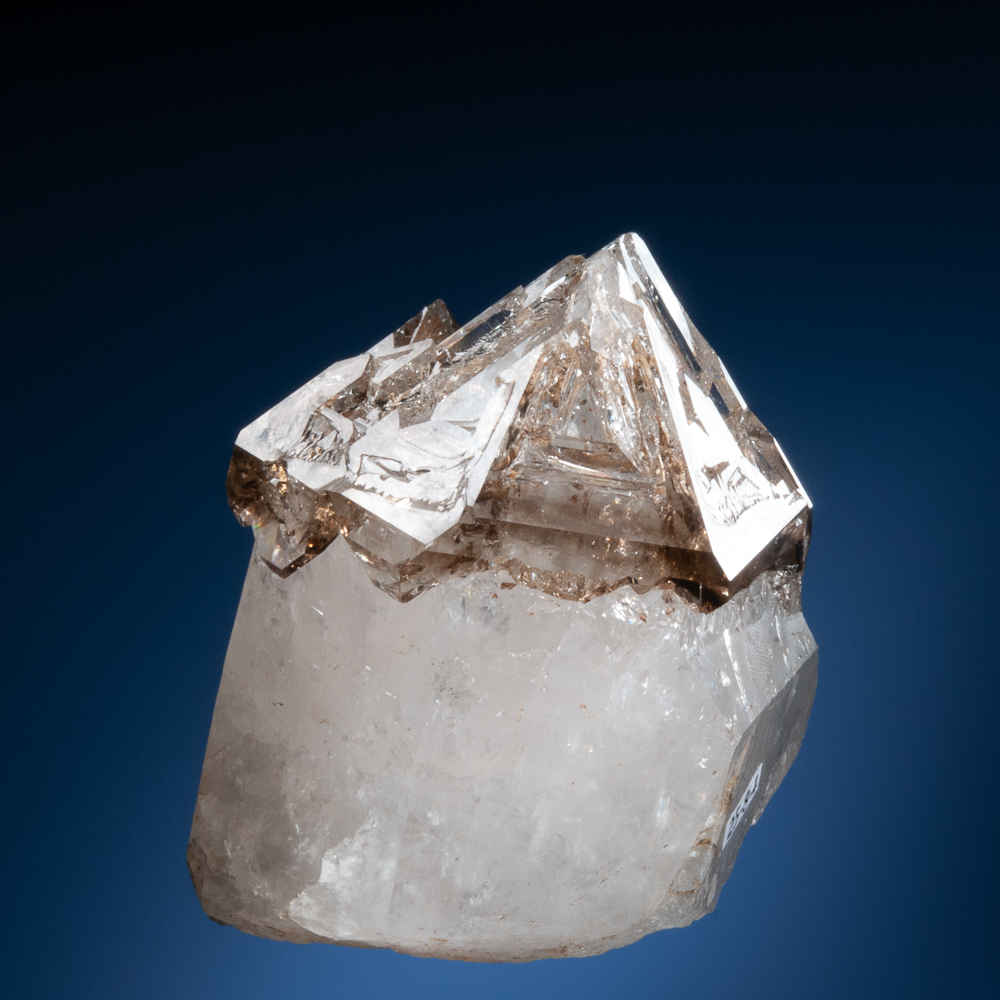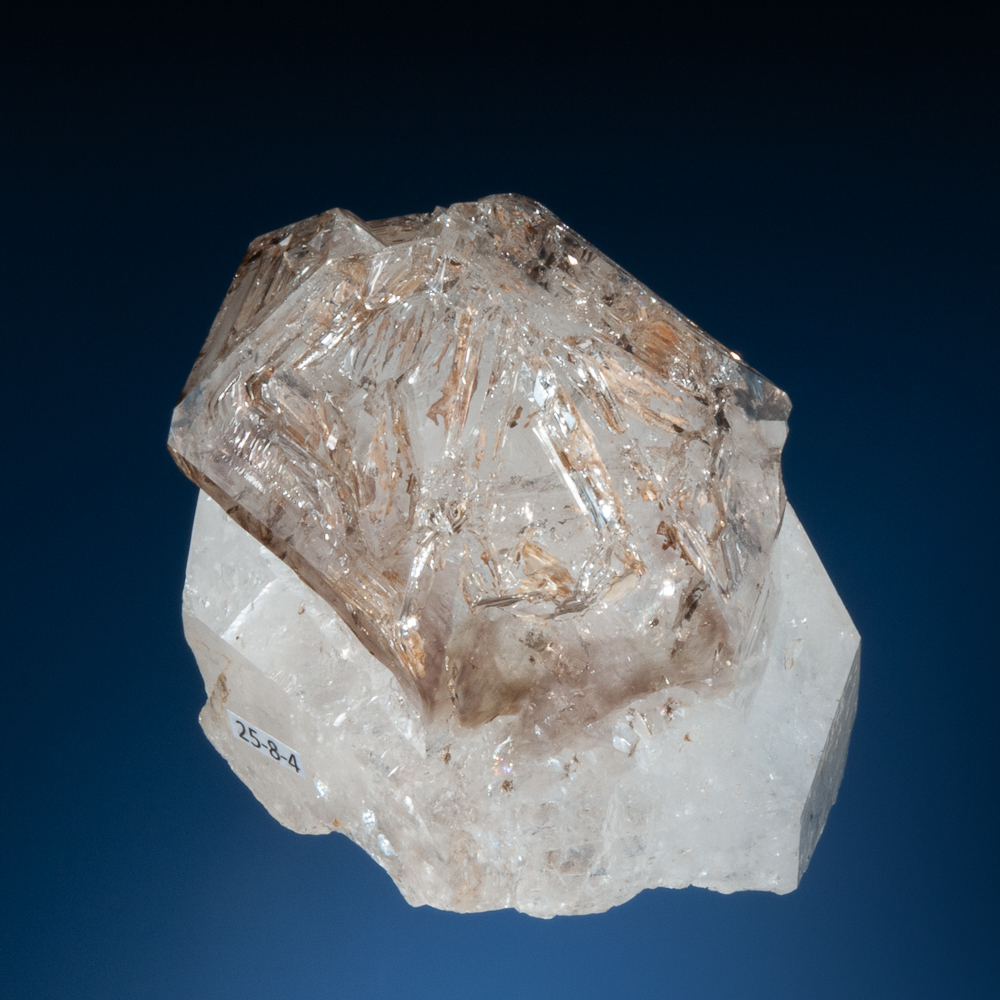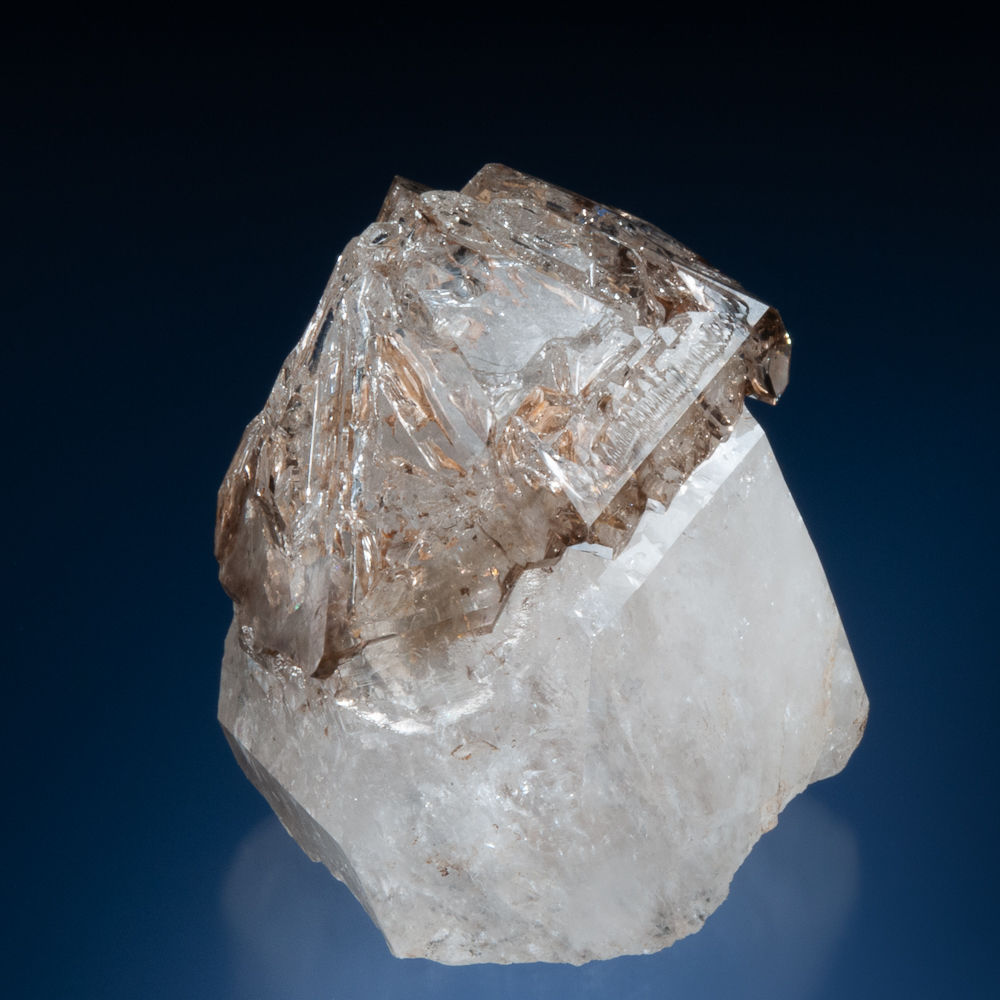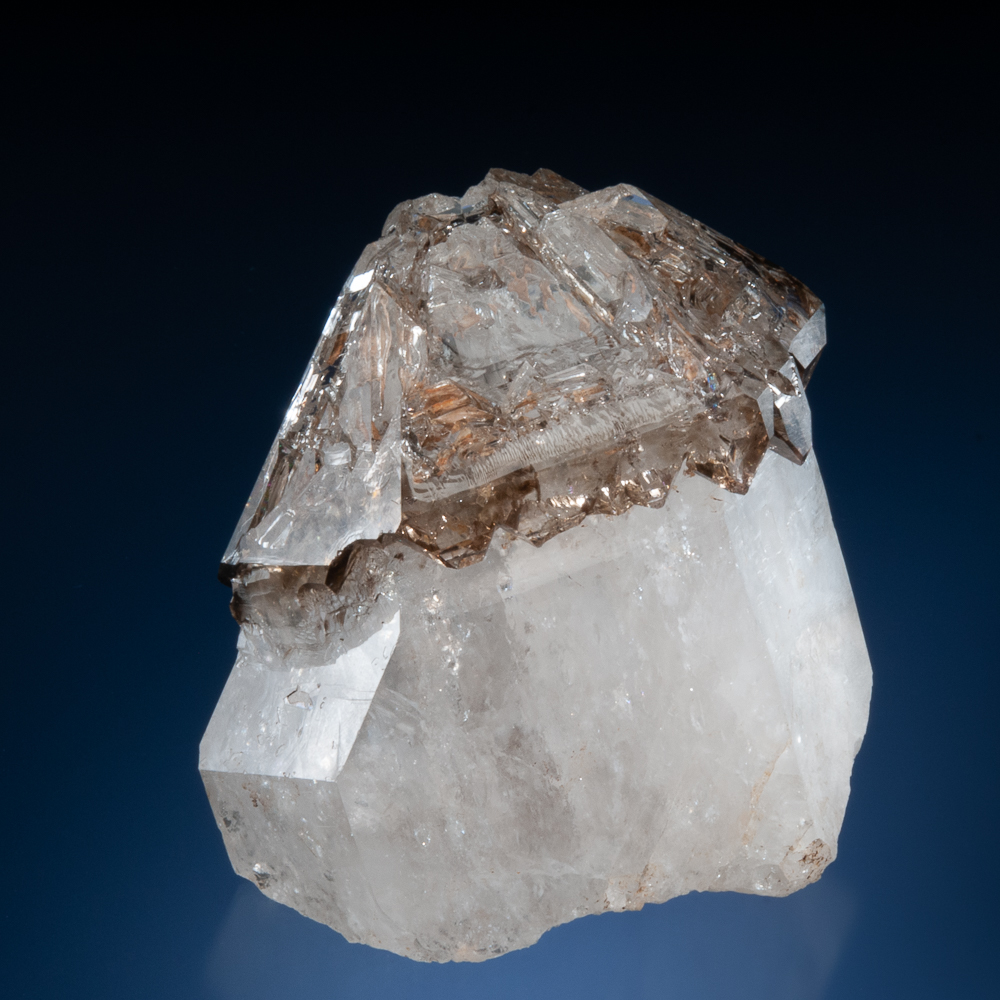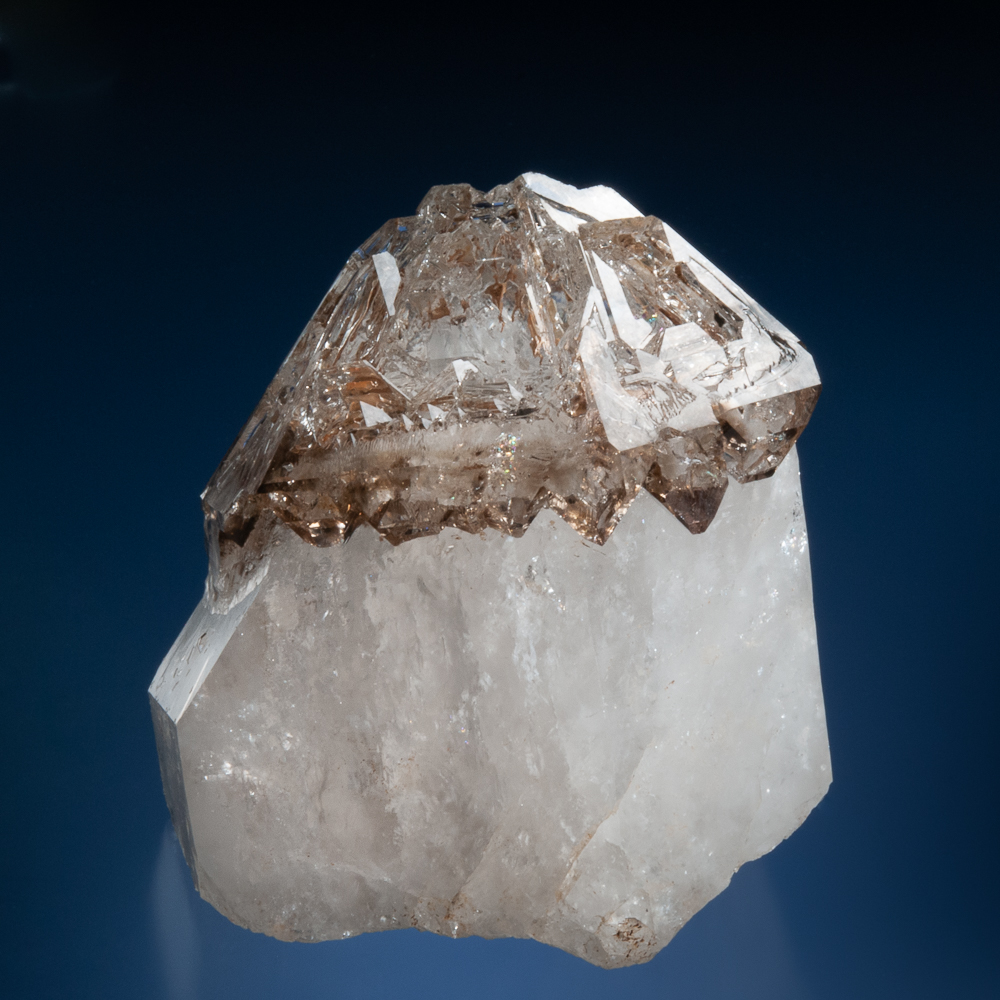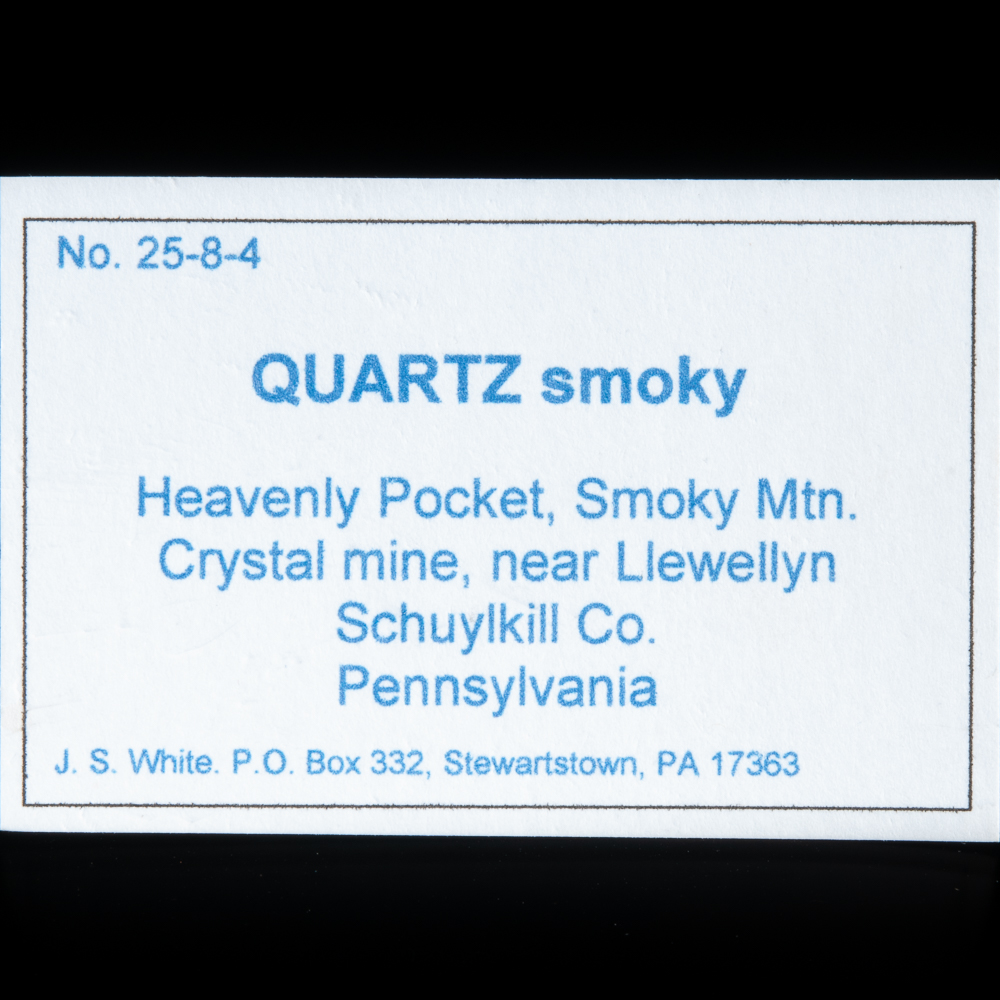Description
Detailed Description
One of the top specimens from the Smoky Mountain find, this is a smoky sceptre with skeletal growth capping the termination of a colourless crystal. The colourless crystal is sharp with prism face striations. The smoky cap is transparent with complex windows and faces, and gemmy-clear downward-facing terminations around the rim. In excellent condition – a couple of very tiny nicks, but the uneven look at the termination is due to the skeletal growth. This is a figured specimen in the article referenced below.
From the John S. White Pennsylvania Collection, John considers this specimen “absolutely unique – there was nothing like from this find (and I’ve seen all the top pieces). There is nothing like it that I’ve seen from anywhere. It is a one of a kind and a killer.”
About the Smoky Mountain Crystal Mine
The first finds at the locality were made by Kelly Hilmer in 2015, and this claim produced a small number of exquisite specimens in 2015 and 2016. It was considered to be potentially the most important new mineral find in Pennsylvania in 50 years. Kelly Hilmer worked the deposit and named/labelled it the “Smoky Mountain Crystal Mine”, so this is how the specimens are labeled. (Mindat and the article referred to below refer to it as the “Smoky Mountain Crystal Prospect”, which is a good description of the occurrence.)
Despite investment in excavation for specimens with heavy equipment, truly fine specimens proved rare. The occurrence of the crystals is quite unusual – they were found “floating” in a sandy layer above a hard sandstone bedrock. As excavations continued, the occurrence of crystals became very sparse.
John White and his good friend Skip Colflesh attended and worked at the site with Kelly Hilmer, and they ultimately had access to many of the best specimens available. The smoky quartz from this find is a second-generation growth over milky quartz crystals and crystal fragments. It has truly brilliant lustre, as good as it gets. John wrote of the lustre that it is “nothing short of breathtaking, among the best ever seen worldwide.” John’s article on the occurrence is published in Rocks & Minerals Vol 92, no. 4 (July/Aug 2017): 366.

